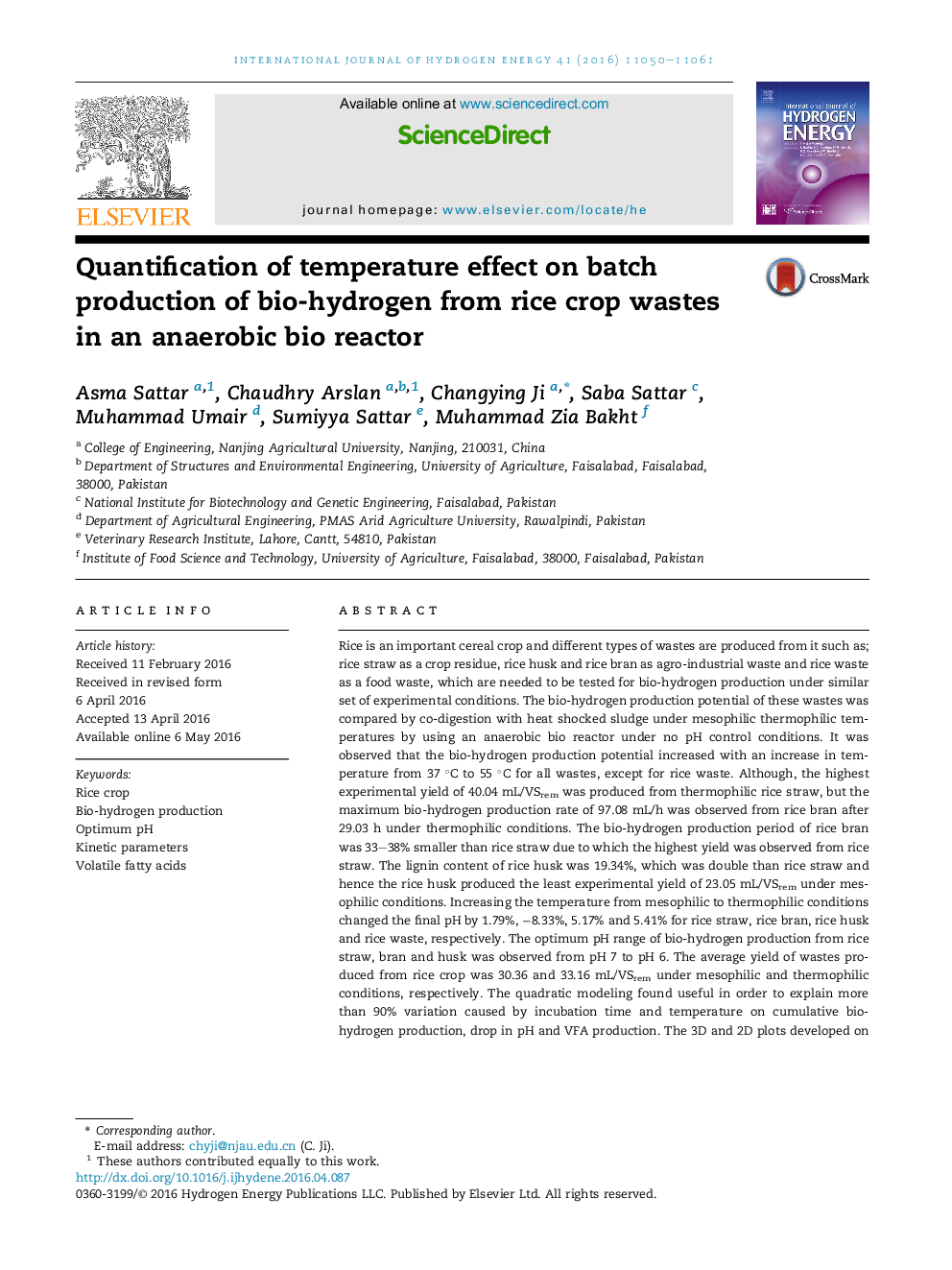| کد مقاله | کد نشریه | سال انتشار | مقاله انگلیسی | نسخه تمام متن |
|---|---|---|---|---|
| 1269539 | 1497399 | 2016 | 12 صفحه PDF | دانلود رایگان |
• Hydrogen potential of rice bran was affected the most by temperature increase.
• Rice straw produced more hydrogen then rice bran due to longer production period.
• Avg. H2 yield from rice crop was 30.37 & 33.6 mL/Vsrem at 37 °C and 55 °C, respectively.
• Optimum pH range of hydrogen production for rice straw, husk and bran is pH7 to pH6.
• Quadratic modeling quantifies the impact of temperature and time on hydrogen production.
Rice is an important cereal crop and different types of wastes are produced from it such as; rice straw as a crop residue, rice husk and rice bran as agro-industrial waste and rice waste as a food waste, which are needed to be tested for bio-hydrogen production under similar set of experimental conditions. The bio-hydrogen production potential of these wastes was compared by co-digestion with heat shocked sludge under mesophilic thermophilic temperatures by using an anaerobic bio reactor under no pH control conditions. It was observed that the bio-hydrogen production potential increased with an increase in temperature from 37 °C to 55 °C for all wastes, except for rice waste. Although, the highest experimental yield of 40.04 mL/VSrem was produced from thermophilic rice straw, but the maximum bio-hydrogen production rate of 97.08 mL/h was observed from rice bran after 29.03 h under thermophilic conditions. The bio-hydrogen production period of rice bran was 33–38% smaller than rice straw due to which the highest yield was observed from rice straw. The lignin content of rice husk was 19.34%, which was double than rice straw and hence the rice husk produced the least experimental yield of 23.05 mL/VSrem under mesophilic conditions. Increasing the temperature from mesophilic to thermophilic conditions changed the final pH by 1.79%, −8.33%, 5.17% and 5.41% for rice straw, rice bran, rice husk and rice waste, respectively. The optimum pH range of bio-hydrogen production from rice straw, bran and husk was observed from pH 7 to pH 6. The average yield of wastes produced from rice crop was 30.36 and 33.16 mL/VSrem under mesophilic and thermophilic conditions, respectively. The quadratic modeling found useful in order to explain more than 90% variation caused by incubation time and temperature on cumulative bio-hydrogen production, drop in pH and VFA production. The 3D and 2D plots developed on the basis of quadratic modeling explained the process parameter is in better way as compared to conventional representation of experimental results. As a whole, increasing temperature not only increased bio-hydrogen yield, but also decrease the volatile fatty acid production.
Figure optionsDownload as PowerPoint slide
Journal: International Journal of Hydrogen Energy - Volume 41, Issue 26, 13 July 2016, Pages 11050–11061
